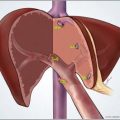Primary liver malignancies and liver metastases are affecting millions of individuals worldwide. Because of their late and advanced stage presentation, only 10% of patients can receive curative surgical treatment, including transplant or resection. Alternative treatments, such as systemic chemotherapy, ablative therapy, and chemoembolization, have been used with marginal survival benefits. Selective internal radiation therapy (SIRT), also known as radioembolization, is a compelling alternative treatment option for primary and metastatic liver malignancies with a growing body of evidence. In this article, an introduction to SIRT including background, techniques, clinical outcomes, and complications is reviewed.
Key points
- •
Multiple prospective phase II, III, and retrospective studies have demonstrated the safety, efficacy, and tolerability of selective internal radiation therapy (SIRT) in hepatocellular cancer (HCC) and colorectal metastasis (CRM).
- •
SIRT could potentially be used for downsizing of an HCC lesion to allow for definitive therapies, such as liver transplantation or resection.
- •
SIRT has shown some survival benefit as a treatment option in patients with chemotherapy-refractory metastatic colorectal cancer.
- •
SIRT has its innate complications, but it seems to be better tolerated by patients than chemoembolization.
Introduction
Primary liver malignancies and liver metastases are affecting millions of individuals worldwide. The definitive management of liver tumors (both primary and secondary) remains a challenge in the unresectable patient population. Established treatment modalities including surgical resection and liver transplantation have been the only curative options offered to patients with any success but are only applicable to roughly 10% of patients. Minimally invasive treatments, such as ablation and transarterial chemoembolization (TACE), have traditionally been used in selective patients with early disease or as a palliative option when surgery is not possible. Even when such options are made available, treatment paradigms vary; as a result, techniques, selection, and clinical outcomes (especially in the setting of embolic therapy) have been limited.
Hepatocellular cancer (HCC) is the sixth most common cancer in the world. Risk factors for the development of HCC include viral hepatitis (ie, hepatitis B virus and hepatitis C virus), alcohol abuse, nonalcoholic steatohepatitis, intake of aflatoxin-contaminated food, obesity, diabetes, and hereditary conditions (such as hemochromatosis).
The efficacy of lipiodol-based TACE has been established in early stage HCC ; however, this approach remains controversial in advanced-disease patients. Furthermore, no prospective randomized controlled comparative studies have been conducted for the use of TACE in any metastatic condition. Neuroendocrine disease, a condition notorious for variability in presentation and prognosis, represents the largest investigated population (in retrospective or single-arm prospective design trials). Drug-eluting bead has demonstrated early favorable results with the use of irinotecan in the CRM population, with limited prospective trials with moderate response (in varied clinical settings).
The implementation of selective internal radiation therapy (SIRT) in the HCC and CRM setting has demonstrated a more formalized and disciplined approach, with phase III level I data demonstrated in the CRM populations and large, prospective as well as retrospective cohorts in the HCC population demonstrating safety, efficacy, and tolerability.
History and Evolution of Radioembolization
Although radiation therapy has proven useful in the treatment of various malignancies, this by large has not been the case with hepatic malignancies. External radiation therapy has not played a major role in the treatment of HCC secondary to the relatively low tolerance of the liver to radiation. The liver is only able to tolerate between 30 and 50 Gy before patients begin experiencing significant radiation-induced liver disease (RILD). However, liver tumors often need radiation doses on the order of 90 to 100 Gy or greater for effective treatment. The limitations associated with external beam radiation have been addressed with the development of radioembolization. Radioembolization or SIRT involves selectively injecting radioactive microparticles via a catheter into the hepatic artery branches feeding liver tumors, where the microparticles lodge in the tumor microvasculature. With this technique, radiation doses as high as 150 Gy can be delivered to a localized region in the liver, thereby eliminating cancerous cells while sparing healthy liver and reducing the incidence of RILD.
The theory behind radioembolization fundamentally rests on the vascular anatomy of the liver. Hepatic lesions receive most of their blood supply from the hepatic artery, whereas normal liver parenchyma receives most of its blood supply from the portal vein. In addition, hepatic tumors also have neovasculature arising from the branches of the hepatic artery that is denser than that of the normal liver parenchyma. Given this anatomic difference, treatment of liver tumors via a transarterial approach is clearly an attractive idea, as it would limit exposure of extremely cytotoxic medications to normal liver parenchyma. In the past decade, developments have made such mechanisms safer and more efficacious in the treatment of liver disease. TACE is now a widely used treatment option for HCC and metastatic liver cancer with proven results but also with proven significant side effects, namely, hepatic toxicity.
The mechanism of action of SIRT is fundamentally different from that of chemoembolization. During chemoembolization, blood vessels supplying the tumor are embolized/blocked to stasis, thus allowing maximum exposure of the chemotherapeutic agent to the ischemic environment created within the tumor. In contrast, blood flow and oxygen is required for SIRT to enable the generation of free radicals, via the ionization of water molecules from the emitted β-radiation. Clinical trials of yttrium-90 microsphere (Y-90) therapy for hepatic tumors date back to the early 1960s. Microspheres are embedded with Yttrium-90, an isotope of yttrium and a pure beta particle emitter. Y-90 has a half-life of 63 hours, a mean energy per disintegration of 0.937 MeV, and emits beta particles, which cause cell necrosis with a mean tissue penetrance of approximately 2.5 mm. These characteristics make Y-90 an excellent isotope choice for internal radiation therapy.
Currently, there are 2 products approved by the Food and Drug Administration (FDA) that are clinically used for radioembolization. TheraSphere particles (BTG Medical, PA; FDA approved for HCC in 1999) are glass microspheres that have a high specific activity and measure 20 to 30 μm in size. The term specific activity means the amount of radioactivity of Y-90 per a microsphere. Because each glass particle contains roughly 2500 Bq per sphere, only 1 to 2 million spheres (lower volume) are usually needed for each treatment. SIR-Sphere particles (Sirtex, Australia; FDA approved for colorectal liver metastasis in 2002) are made of resin, have a lower specific gravity, and measure 20 to 60 μm in size. Each resin microsphere contains about 50 Bq per sphere; hence, 40 to 60 million spheres are usually needed to treat an average patient. Although TheraSpheres do not have a significant embolic effect on hepatic tumors, SIRSpheres are large enough that they may have a minimal embolic effect.
As more microparticles are administered with SIRSphere treatment, the result is in a more even distribution of particles and, hence, delivery of radiation throughout the tumor. In contrast, as TheraSphere particles are administered in lower numbers because of their higher specific activity, this predisposes them to have inhomogeneous tumoral coverage caused by the phenomenon of microclustering (particles preferentially accumulate within the periphery of the tumor). Excessive radiation exposure as a result of particle accumulation has been shown to result in parenchymal fissuring, lobar edema, or compensatory hypertrophy of nontreated liver. As each microparticle has its own dose cloud, radiation-induced treatment of tumors is the result of the collective effect of multiple microparticles that create a cumulative isodose cloud of lethal radiation exposure (via crossfire) in the range of 100 to 1000 Gy.
The amount of activity (ie, ionizing radiation) delivered with each type of microparticle can be estimated using either the body surface area (BSA) or the partition model. SIRT with resin microspheres uses the BSA model, which is supported by a recent study showing direct correlation of BSA with the volume of nontumoral liver as calculated by computed tomography (CT). In contrast, SIRT with glass microspheres uses a compartmental model. Although a single compartment model is currently advocated, whereby the size of the entire liver is used irrespective of the volume of tumor burden, activity calculations previously used a 2-compartmental model incorporating both the tumor and normal background liver volume. The advantage of the latter method is that it allows more accurate optimization of the amount of radiation delivered to tumors. The compartmental model ensures that only the right amount of radiation is given to patients to cause tumor cell death and not excessive radiation placing patients at unnecessary risk of developing RILD. This point is particularly important in those patients with limited background liver reserve. The empiric method, which is usually not recommended, incorporates only tumor size based on imaging.
Radioembolization Technique
Generally, patients with a life expectancy of 3 months with unresectable primary or metastatic hepatic tumors and those with tumor burden predominantly involving the liver, which is considered a life-limiting factor, are considered for radioembolization. Patients with metastatic disease not on clinical trials should either be undergoing first-line chemotherapy concurrently or have failed first-line chemotherapy. Contraindications to radioembolization therapy include patients with a significant tumor burden who have a limited amount of normal liver parenchyma that would not tolerate radioembolization. In addition, patients with an elevated serum total bilirubin level greater than 2 mg/dL without a reversible source are not eligible. Unlike chemoembolization, portal vein thrombosis is not contraindicated, as SIRT has a minimal embolic effect.
Before undergoing radioembolization, a laboratory evaluation should be performed to assess the patients’ hepatic and renal function and also to establish the baseline tumor markers (eg, alpha fetoprotein for HCC, CA 19-9 for cholangiocarcinoma, and CEA for colorectal cancer) if not already established. Imaging via 3-phase contrast CT scans of the chest, abdomen, and pelvis or gadolinium-enhanced MRI is then performed to identify and characterize the hepatic tumors that will be targeted as well as the extrahepatic tumors throughout the body. Using the same CT or MRI data, a 3-dimensional (3D) volumetric analysis should be done before treatment to calculate the tumor volume, total liver volume, and liver reserve ( Fig. 1 ). After determining that a patient’s particular tumors and clinical presentation are suitable for radioembolization, patients should undergo hepatic angiography (pre-SIRT mapping procedure) 1 to 3 weeks before the treatment ( Fig. 2 ). This part is vital to the pretreatment planning phase allowing for dosimetry calculations to be made before treatment administration. In addition, angiography allows for the mapping of the major hepatic vessels, the superior mesenteric artery, and the celiac artery. If variant anatomy is demonstrated on the angiogram that would allow for nontargeting embolization of gastroduodenal or gastric arteries, these vessels should be embolized or an antireflux catheter system should be used to avoid potential radiation injury to other organs, including radiation-induced pancreatitis or gastric ulcers. In addition to vascular mapping, a hepatopulmonary shunt is assessed using 99mTc macroaggregated albumin (MAA) ( Fig. 3 ). In this nuclear medicine study, 99mTc-labelled MAA is first injected intra-arterially and then either single-photon emission CT (SPECT) or a planar study of the chest and abdomen are subsequently performed within few hours of the injection. If the scan shows that the lungs and/or gastrointestinal (GI) tract are at risk for radiation exposure greater than 30 Gy, radioembolization is contraindicated given the high risk for extrahepatic toxicity, especially radiation-induced pneumonitis, which could be fatal. It is also possible to limit extrahepatic toxicity by embolizing the observed shunts or performing pre-SIRT TACE. Another 99mTc-labelled MAA scan should be done subsequently to confirm success of the embolization to decrease a shunt.







